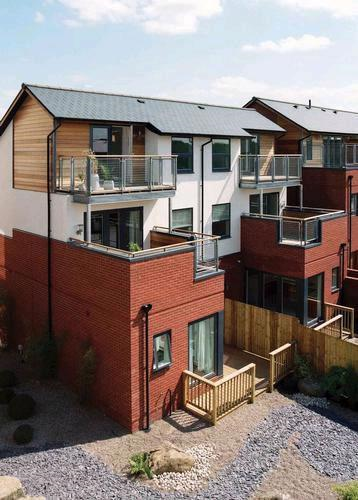
Flat owners advised to keep track of years on their lease…
and to act fast before it drops under 80. The number of years left can be crucial when trying to sell or remortgage as theoretically a leasehold property gives the owners the right to live there for only a limited time. The land it stands on is owned by the freeholder or landlord who charges ground rent and will ultimately own the flat when the lease runs out.
The lease length is important as mortgage lenders have minimum requirements relating to the remaining term on the lease. if these cannot be met, they will not lend.
Halifax, for example, requires an unexpired term of at least 70 years at the time of application. Once it slips below 80, the costs to extend the lease can increase as the landlord can ask for a share of the extra value the extension will add to the property.
The good news is that the 1993 Leasehold Reform Act gives most flat owners the right to extend their lease by 90 years as long as they have owned the flat for at least two years.
A shrinking lease should not deter an owner from putting a property up for sale as it is still possible to start the lease extension process and assign the extension to the buyer.
Either way, extending a lease can be a time-consuming – and expensive – procedure. The sums for a lease extension are complicated and the cost will depend on the property value, location, ground rent and how many years are left on the lease.
Jean Walker, partner of the real estate team at law firm SAS Daniels, says: ‘The price, known as the premium, increases if there is less than 80 years left to run on the lease, and clients would be advised to start the process well before this date.’
Another crucial element to factor in is the attitude of the freeholder – as the leaseholder will have to enter a process of negotiation.
The leaseholder and freeholder must each appoint a specialist surveyor and a solicitor to extend a lease. The surveyor’s job is to carry out a complex calculation, involving the current length of the lease, the property’s location, ground rent, the value of the flat with the lease as it is and the value of the flat when the lease is extended.
The leaseholder’s surveyor puts forward a figure to open negotiations and then the solicitor serves the freeholder a section 42 notice under the 1993 Leasehold Reform Act.
This triggers a timetable, giving the freeholder a two-month window to respond by serving a section 45 notice. This will include the freeholder’s opening price – inevitably much higher than the leaseholder’s offer. The surveyors from each side then negotiate until a price is finally agreed.
Walker says: ‘The process has strict time limits, so it is important that tenants are aware of these and the likely fees involved before they start the process. Clearly the more the price is disputed, the higher the surveyor’s and legal fees on both sides will be.’
If the two sides fail to reach an agreement within two months either party can make an application to the First Tier Tribunal – formerly the Leasehold Valuation Tribunal – which can rule as to what is a fair price. However, this will mean extra costs for both sides.
Alternatively, it can be worth contacting the freeholder directly to reach an informal agreement about a lease extension, sidestepping the hassle of issuing formal notices.
Either way, once a price has been agreed, the freeholder’s solicitor will draw up a new lease that the leaseholder’s solicitor will check over.
Once it has been signed by both parties the leaseholder’s solicitor will register the new lease with the Land Registry.
For an estimate of how much a lease extension will cost try the calculator on the Leasehold Advisory Service website.
Leaseholders will need to provide the property’s approximate value, the ground rent and the number of years left on the lease.
When extending a lease with less than 80 years to run, there is an additional fee – called a ‘marriage value’ – paid to the freeholder.
Marriage value is the sum of money that a lease extension would add to the property. If you extend a lease of less than 80 years, the freeholder is entitled to half this amount.
The Leasehold Advisory Service calculator shows how important it is to extend a lease before it falls below 80 years.
Take, for example, a £300,000 property with ground rent of £100 a year. With 81 years remaining on the lease, the extension would cost between £5,000 and £8,000. But if there were 79 years left this could jump to as much as £10,000.
Under the 1993 Leasehold Reform Act a leaseholder is obliged to pay both parties’ surveying and legal costs, which can be steep.
While flat owners are likely to seek out competitive quotes for professional services, the freeholder is less likely to bother.
As a rough guide, you should expect to pay a total of around £2,500 in costs for solicitors and surveyors. Published May 26th 2015.
